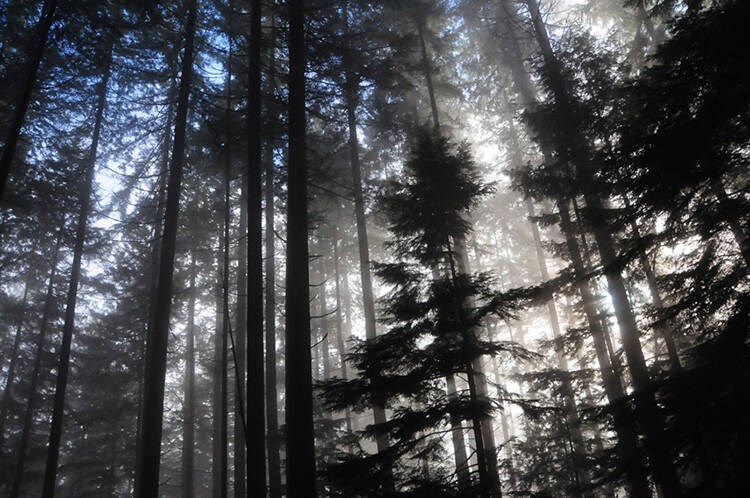A commentary by a veteran environmental journalist living in Maple Bay who publishes a blog, sixmountains.ca, on North Cowichan’s forests.
Not every day does a community ask a university forestry faculty for advice on managing a 5,000-hectare forest reserve, and get back a response along the lines of “Hey, you might consider not logging at all — and earn more cash, to boot.”
But that’s exactly the scenario playing out in North Cowichan, home to the most threatened forest type in B.C. — the coastal Douglas-fir forest — and a popular recreation destination less than an hour’s drive north of Victoria.
More than three years ago, North Cowichan declared a moratorium on new logging in the Municipal Forest Reserve — better known as the Six Mountains — pending a public consultation on the future of the reserve.
A separate parallel but closed consultation is underway with local First Nations.
In the first phase of consultation, residents identified their top considerations about the forest reserve in terms of water quality, recreation, habitat/ecology, protection of viewscapes, etc. Revenue to the municipality ranked 12th out of 14 choices, just above forestry jobs.
Those results may have factored into the mayoral race last October.
John Koury, the right-of-centre candidate who supported a quick resumption of logging the reserve, was handily defeated by Rob Douglas, a New Democrat viewed as a more environmentally progressive member of council.
North Cowichan has contracted a group of forest experts known as the UBC Partnership Group to develop a number of management scenarios for the forest reserve.
In September, UBC came back with four scenarios: Status Quo, logging of 17,500 cubic metres of timber per year; Reduced Harvest, 7,400 cubic metres; Active Conservation, 1,300 cubic metres; and Passive Conservation, no logging.
Status Quo represents an estimated 538 loaded logging trucks per year, Reduced Harvest 227 trucks, Active Conservation 40 trucks, and Passive Conservation no trucks.
Based on a 30-year projection, both conservation scenarios would bring in more money than the two logging scenarios through the sale of carbon credits — by a wide margin.
Passive Conservation would generate an estimated net revenue of $39.6 million, Active Conservation $35.1 million, Reduced Harvest $30.7 million and Status Quo $31.3 million.
The advantage of Active Conservation is that it would allow not clearcutting, but logging on a more selective basis to restore and enhance ecosystems and promote biodiversity.
As a bonus, it could create employment for First Nations who, for thousands of years, have called the Six Mountains — Tzouhalem, Prevost, Sicker, Richards, Maple and Stoney Hill — their home.
UBC calculated a five per cent annual increase in carbon prices over the next three decades, reflecting an upswing for this sector. Of course, carbon credits are not the answer in every case, but represent a way forward for this rare forest type.
Note that the region’s biggest private logging company, Mosaic, is already way ahead of North Cowichan.
Mosaic announced last March it is deferring logging on 40,000 hectares for at least 25 years to pursue the sale of carbon credits.
Eighty per cent of those lands are at least 120 years old (half of them true old-growth, older than 250 years) and 20 per cent are 40 to 120 years old.
North Cowichan has no old growth left — but protection of our maturing second-growth forests is the only way we can get there.
And these forests are desperate for conservation.
UBC described the coastal Douglas-fir forest in the Georgia Basin as “imperilled.” Half of this forest has been converted to human use. More than 80 per cent is privately owned, and more than 153 species are at risk, UBC says.
The B.C. government is on board.
The Forests Ministry chairs the Coastal Douglas-fir Conservation Partnership, an organization with an impressive list of more than 40 members ranging from conservation groups to municipal, regional, provincial and federal levels of government — all dedicated to protecting the coastal Douglas-fir forest.
One name is notably absent from that list — North Cowichan.
It is time for change. Which brings us back to the public consultation.
Note that both residents of North Cowichan as well as those living outside the community have until Dec. 31 to complete an online survey expressing their position on the four management scenarios. bit.ly/3HaWVJV
The fate of a rare forest landscape in North Cowichan hangs in the balance.
>>> To comment on this article, write a letter to the editor: letters@timescolonist.com



